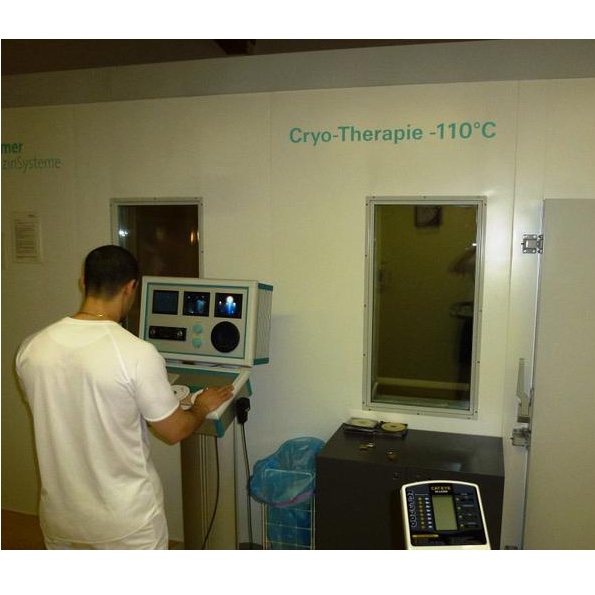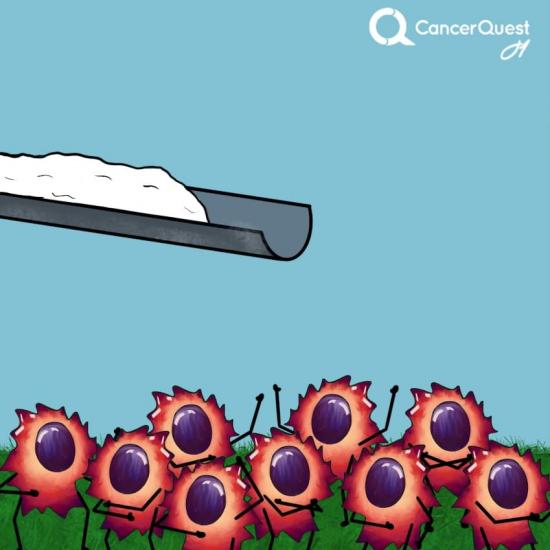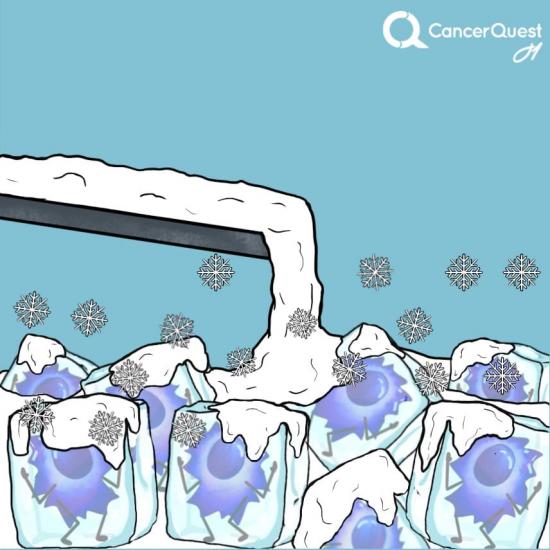
Cryotherapy or cryoablation (Cryo is from the Greek for frost or extreme cold. Ablation refers to removal or elimination.) is the use of extreme cold to kill tumor cells. A probe containing an extremely cold fluid is placed inside/on the area to be treated and the tumor (or abnormal growth) is frozen. Cryotherapy can be performed during a open (fully invasive) surgery or the probes can be inserted through the skin in a minimally invasive procedure. The liquid does not enter the tumor, but the rod is cold enough to freeze the tumor.

Cryotherapy freezes and kills cancer cells and any nearby normal cells.

The cold liquid is not actually placed into the tumor. It is inside a rod. The rod may have to be inserted and removed several times.
Cryotherapy is used to treat several different pre-cancerous and cancerous conditions, including: kidney cancer1, 2 lung cancer1, esophageal cancer3, liver cancer4, cervical intraepitheal neoplasia (CIN)5, prostate cancer6, retinoblastoma7 and skin neoplasms8.
- 1ab Gillams A. Tumour ablation: current role in the kidney, lung and bone. Cancer Imaging. 2009 Oct 2;9 Spec No A:S68-70. [PUBMED]
- 2 Kunkle DA, Kutikov A, Uzzo RG. Management of small renal masses. Semin Ultrasound CT MR. 2009 Aug;30(4):352-8. [PUBMED]
- 3 Halsey KD, Greenwald BD. Cryotherapy in the management of esophageal dysplasia and malignancy. Gastrointest Endosc Clin N Am. 2010 Jan;20(1):75-87, vi-vii. [PUBMED]
- 4 Awad T, Thorlund K, Gluud C. Cryotherapy for hepatocellular carcinoma. Cochrane Database Syst Rev. 2009 Oct 7;(4):CD007611. [PUBMED]
- 5 Martin-Hirsch PP, Paraskevaidis E, Bryant A, Dickinson HO, Keep SL. Surgery for cervical intraepithelial neoplasia. Cochrane Database Syst Rev. 2010 Jun 16;6:CD001318. [PUBMED]
- 6 Pisters LL. Cryotherapy for prostate cancer: ready for prime time? Curr Opin Urol. 2010 May;20(3):218-22. [PUBMED]
- 7 Lin P, O'Brien JM. Frontiers in the management of retinoblastoma. Am J Ophthalmol. 2009 Aug;148(2):192-8. Epub 2009 May 24. [PUBMED]
- 8 Terushkin V, Braga JC, Dusza SW, Scope A, Busam K, Marghoob AA, Gill M, Halpern AC. Agreement on the Clinical Diagnosis and Management of Cutaneous Squamous Neoplasms. Dermatol Surg. 2010 Aug 4. [Epub ahead of print [PUBMED]
